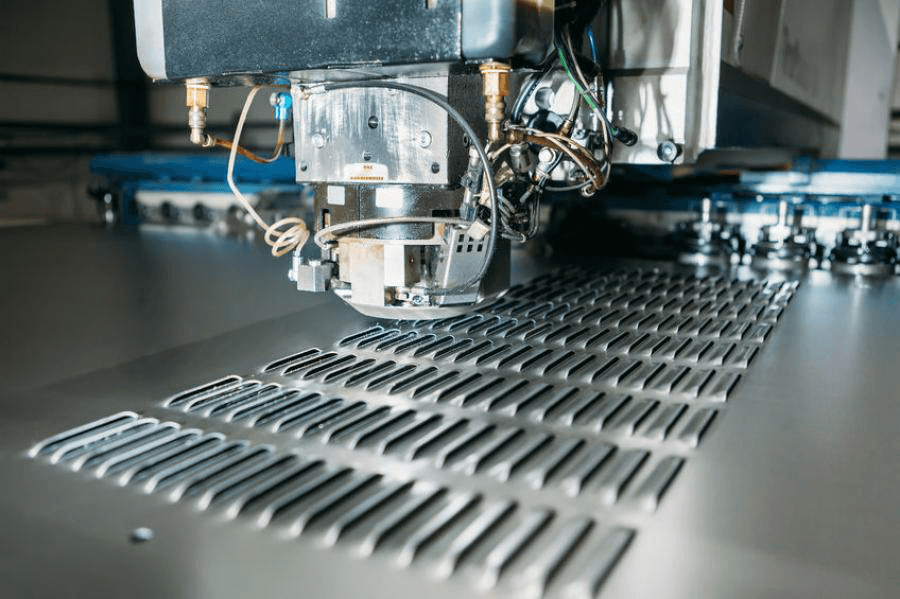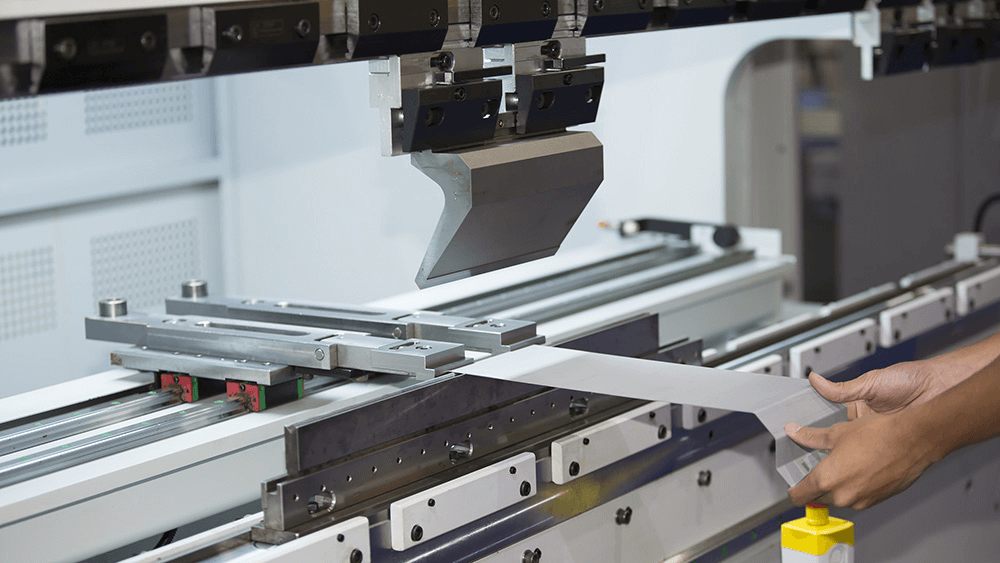What is cold and hot Metal Stamping? How to make Sheet Metal Stamping?
2020-07-21A Practical Guide to Understand Metal Stamping Press

The topic of metal has remained popular in every era. It is particular famous in connection with modern technology. In reality, however, metal stamping is an ancient craft that over the centuries became an advance technique.
What is metal stamping?
Metal stamping is a controlled deformation process in which the body changes its shape under the influence of excessive pressure. Thanks to such processing, metal products are given the most diverse forms that they need to fulfill their functional duties.
Stamping gives in to parts of small thickness, since bending thick products is very problematic.
How metal stamping is carried out?
Metal stamping allows you to quickly and accurately shape the original sheet material into a finished product.
This process consists in the deformation of the metal under the action of directional pressure. In this case, the material changes its shape, while maintaining the initial thickness of the sheet.
The main types of metal stamping
This method of processing is used in small, medium and large volumes in industries.
Stamping of metal products is used in almost all industries. Moreover, it allows you to create any kind of detail. This technology has a very long history and is now actively developing.
New methods are constantly emerging that use forces of different origins other than gravity. Similarly, deformation occurs under the influence of:
- hydraulic pressure
- electric current
- Magnetic field, etc.
Next, we will consider issues related to the principle of operation of:
- metal stamping
- types and
- methods of metal deformation
- The use of products created in this way in various industries.
What is sheet metal deformation?
Deformation of sheet metal can be carried out under the influence of high pressure. Based on this, all types of stamping can be divided into two large groups:
- cold;
- hot
Generally, both types have advantages and disadvantages that delimit the scope of their use. Cold stamping is carried out at a temperature below the melting point of the metal.
Furthermore, this avoids shrinkage during cooling. But it imposes restrictions on the shape of the final product. This method creates parts without a large number of embossed elements, for example, parts of a car body.
The main requirements for the material used during cold metal stamping are high ductility. In addition, the method is suitable for:
- low-carbon and alloy steels
- copper
- Brass
- aluminum and magnesium alloys, and
The following is required for metal stamping:
- A soft pad, a metal foil and embossing tool.
- If you want to try out the technique first, you can use a simple embossing pen and a teaspoon as a tool.
- If you like this hobby then you should get the right tools. It is much easier to achieve much, much better results.
- The special metal stampingtools look a bit "old-fashioned". But also very stable - and that's exactly what they are! They serve their purpose better than some new tools. Because they are stable and fit well in the hand.
Why metal stamping?
Metal stamping is an important manufacturing process, depending on what stamping requires shape and function. The advantages are:
- high production rate
- consistency and
- Low cost.
Metal Stamping technology is applied in many industries. Such as:
- Automotive
- heavy industry
- electronic industries
- electronic components
- hardware accessories
- Vehicle accessories.
Stamping molding technology is a technology for forming a desired shape by combining technologies. Such as:
- Bending
- Drawing
- punching, and
- Cutting metal plate materials.
It has the advantage of being able to manufacture large numbers of products at low cost. It is one of the main technologies for manufacturing metal parts.
Main mechanical hammers used in forging
Modern forging machines mainly include mechanical hammers and press machines.
First, there are two main types of mechanical hammers used in forging:
- air hammers
- and spring hammers
What is hydraulic metal stamping?
A hydraulic press is a press machine that uses the pressure of a cylinder into which water or oil is fed to perform processing. The load and speed can be controlled by adjusting the hydraulic pressure sent to the cylinder.
The potential of cold sheet metal stamping
The sheet metal stamping and forming is a production process that allows you to create objects and metal products starting from a lamina. It is compressed and molded into different shapes and sizes depending on the type of tool.
The sheet is applied in many sectors, from furniture to electronics, from objects to heating, from the food to the industrial sector.
The stamping of the sheet allows producing high quality objects at low costs. Even when the shapes and characteristics are very elaborate and rich in details.
This is because the machinery used in production and the production processes are highly sophisticated and cutting edge in every respect.
The fastest and most efficient sheet metal pressing technique is the cold one. Let's look at how it works.
What is cold stamping of sheet metal?
The cold sheet is the most convenient and rapid type of industrial molding. Because it is operated at ambient temperature, without requiring the heating of machinery and metal plates before machining.
Generally, it greatly reduces the waste of energy, economic and temporal. This is why many companies use it for sheet metal stamping in Turin and throughout Italy.
Conclusion on metal stamping
It's used for a very long time. Since it comes from the forging of metals - a process that develops together with humanity. without which it is impossible to imagine the creation of tools, construction tools and weapons.
Modern methods of manufacturing parts require not only high precision, but also material savings. While cutting metal, a very large part of it goes into chips maximum rationality. It consumes material, giving it a shape that practically does not need further processing.

Although the presses used for metal stamping are constantly evolving, increasing power and productivity. Their technical characteristics sometimes do not allow the creation of parts of very large sizes.
In this case, alternative methods come to the rescue. Such methods use hydraulic, explosive and electromagnetic forces.
The introduction of these methods into production allows you:
- to reduce the consumption of materials
- increase the accuracy and
- reliability of products and
- speed up the production processes.




